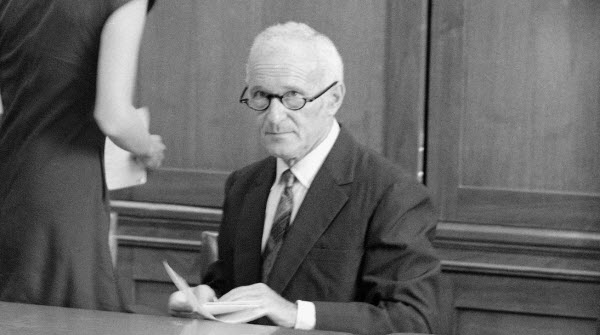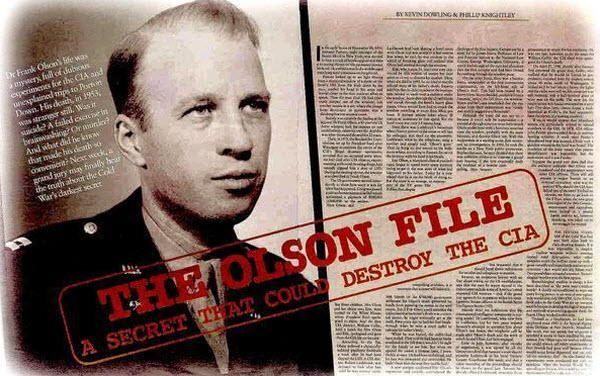During the Cold War, the intense rivalry between the United States and the Soviet Union, now Russia, extended across all domains—military, intelligence, and technological. The Americans, increasingly convinced that the Soviets had developed mind-control technologies, decided to undertake similar initiatives. This led to the creation of a notorious program known as Project MK-Ultra, which began in 1953 and continued for a decade. This program expanded its activities through 80 research institutions, universities, and hospitals, conducting numerous illegal and unethical experiments on American citizens without their knowledge. These experiments included electric shock torture, verbal and sexual abuse, and administering massive doses of narcotics and hallucinogens.
By the early 1950s, as the Cold War reached its peak, the U.S. intelligence community became increasingly obsessed with Soviet technological advancements. The U.S. government, particularly concerned about falling behind in new interrogation techniques, had reports (later proven to be incorrect) during the Korean War suggesting that North Korean and Soviet forces had developed mind-control capabilities for interrogating American prisoners. This created an urgent need for the U.S. to develop similar technologies. On April 13, 1953, CIA Director Allen Dulles ordered the initiation of “Project MK-Ultra,” appointing toxicologist and chemist Sidney Gottlieb, known in secret circles as “The Black Sorcerer,” to lead it. One of his primary goals was to develop a “truth serum” to use against Soviet spies and prisoners of war to extract valuable intelligence. Although creating such a serum proved challenging, researchers believed that a form of mind control could be achieved by placing subjects in altered mental states using various experimental drugs.

From the outset, Project MK-Ultra’s mind-control experiments were conducted with extreme secrecy. The CIA was aware of the program’s unethical nature and the need for confidentiality. The program, consisting of 162 experiments, was carried out across numerous cities, universities, prisons, and hospitals involving 185 researchers, many of whom were unaware that their research benefited the CIA. Initial experiments involved administering large amounts of various mind-altering substances in hopes of achieving mind control, using hallucinogens, opiates, and super-potent psychedelics, as well as widely available substances like alcohol. Sometimes, researchers gave subjects opposing drugs (e.g., barbiturates and amphetamines) simultaneously and monitored their reactions or gave subjects a dose of another drug like hallucinogens.

In addition to drugs, researchers also used hypnosis to extract information. They investigated the effects of hypnosis on lie detector results and memory loss. Participants underwent experiments involving electroconvulsive therapy, sensory stimulation, and paralysis-inducing drugs. Professor Donald Cameron, the first president of the World Psychiatric Association, conducted experiments involving patients being put under anesthesia and exposed to repetitive noise for extended periods, hoping to “erase” memories to reprogram minds. These experiments left some individuals in comas for months and caused permanent issues like incontinence and memory loss in those who awoke. Another experiment, supervised by renowned behavioral scientist John Lilly, involved creating the first sensory deprivation tank to study human reactions in a stimulus-free environment.

Despite the vast array of tools available to researchers, it can be said that Project MK-Ultra achieved significant success in mind control but at a tremendous cost, causing severe disturbances in the minds of its volunteers.
Due to the program’s secrecy, many test subjects were unaware they were part of a larger covert operation run by the CIA. Gottlieb admitted that his team targeted prisoners, drug addicts, sex workers, mentally ill individuals, and some volunteers motivated by money or adventure. One of the early volunteers was author Ken Kesey, who, as a student at Stanford University, participated in the program and later drew on his experiences with hallucinogenic drugs for his famous novel, One Flew Over the Cuckoo’s Nest.
While Kesey’s experience was relatively positive, many others suffered horrific abuses in the name of science. In one case, a mentally ill patient in Kentucky was given hallucinogens daily for 174 consecutive days, a life-threatening situation. Notorious gangster Whitey Bulger reported being dosed with hallucinogens and monitored by a doctor who repeatedly asked him questions under the drug’s influence, claiming that his criminal career partially resulted from these experiments. Another suspected participant was Charles Manson, who orchestrated a series of brutal murders in Los Angeles in 1969. His cult used hallucinogens similar to those used in MK-Ultra. Not all subjects were civilians; some were CIA agents themselves. Gottlieb claimed to test hallucinogens on CIA officials without their knowledge, and experiments continued for over a decade, including one on Professor Frank Olson, a U.S. Army scientist who suffered depression from the drugs and ultimately died by jumping from a thirteenth-floor window after a week of drug use.
The impact of these experiments included severe psychological effects such as depression, memory loss, paralysis, confusion, pain, insomnia, and schizophrenia-like symptoms. Many of these long-term effects went untreated and were not reported to authorities.

In early 1973, following the Watergate scandal, CIA Director Richard Helms ordered the destruction of all MK-Ultra files and documents, fearing investigations into all government agencies and the risks of exposing such a controversial subject. However, in 1974, journalist Seymour Hersh published a detailed report in the New York Times about the CIA’s illegal experiments and surveillance on American citizens. This led President Gerald Ford to initiate an investigation into CIA activities in 1975 to uncover internal conspiracies. The Rockefeller Commission’s investigations revealed that much of the evidence had been destroyed and that there had been no prior consent from those subjected to the experiments, leading to a significant violation of American citizens’ rights. President Ford subsequently issued an executive order prohibiting drug experiments on humans without written consent and full awareness of the details.

In 1977, as more details about the program became public, the Senate held hearings on the project’s ethics. Stansfield Turner, then CIA Director, revealed that a set of approximately 20,000 documents had survived the destruction orders because they were misplaced in an archive not typically used for such records. These documents included financial details but contained little about the project’s specifics. As the topic gained more attention, survivors of the experiments filed lawsuits against the CIA and the federal government. In 1992, 77 individuals who participated in the experiments received financial settlements or compensation, including Frank Olson’s family, who received $750,000 under a special Congressional law. Olson’s family met with President Ford and CIA Director William Colby, who publicly apologized. Many others were denied compensation due to difficulties in proving their participation conclusively.
To this day, the government acknowledges conducting MK-Ultra experiments but much remains mysterious. The CIA admits the experiments took place in 80 institutions, but most details are still debated among conspiracy theorists. The CIA insists that the experiments ceased in 1963 and that all related activities were abandoned due to destroyed records and the program’s secrecy, though many believe such experiments may still be ongoing today, though there is no way to confirm this.
